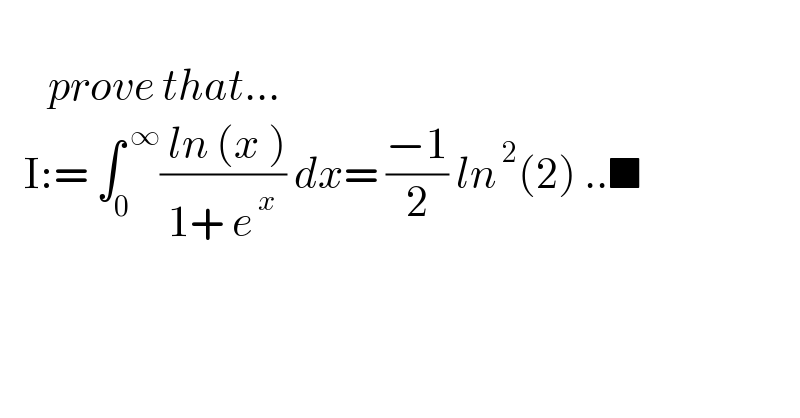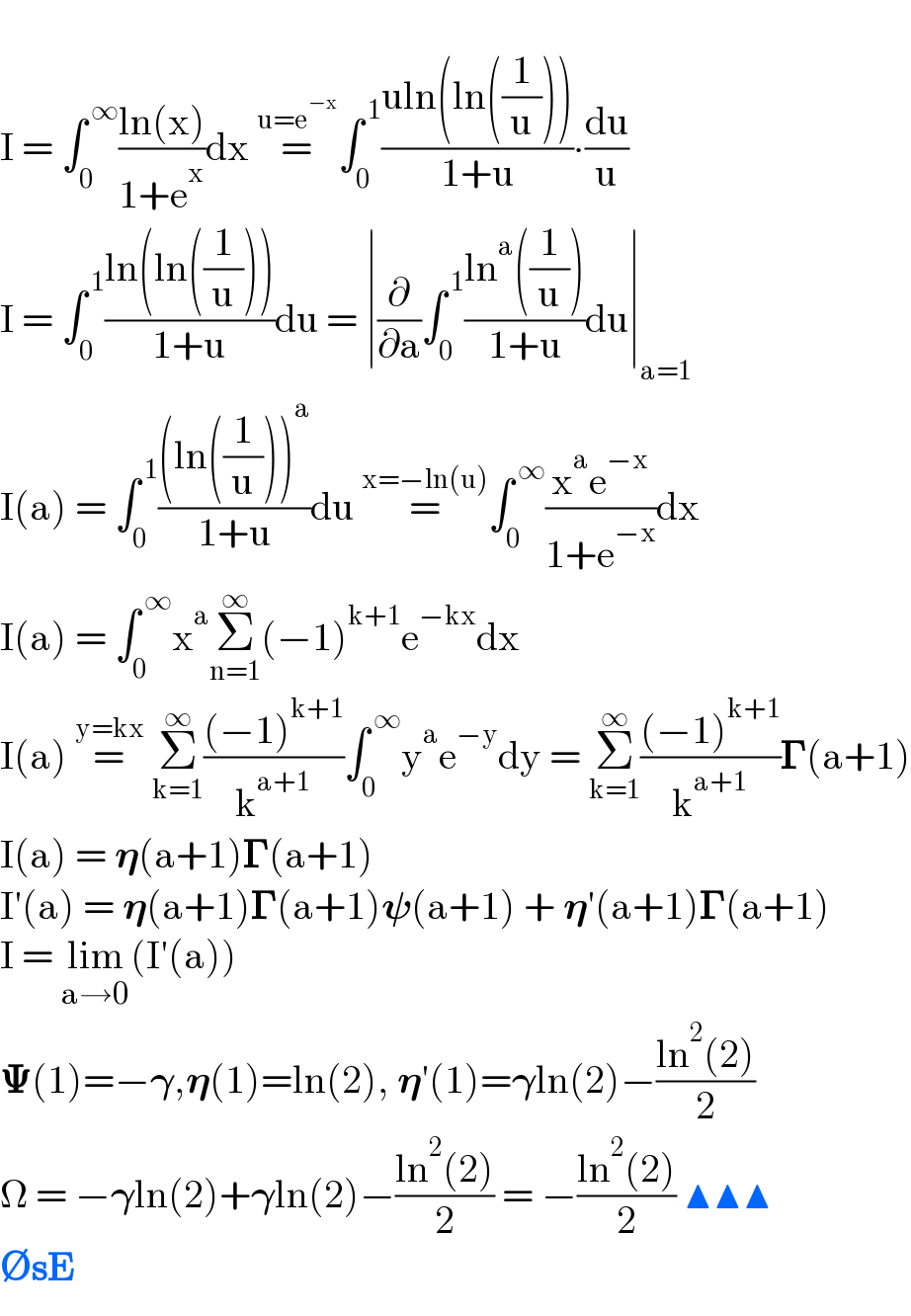
Question and Answers Forum
Question Number 151447 by mnjuly1970 last updated on 21/Aug/21

Answered by Lordose last updated on 21/Aug/21

Commented by mnjuly1970 last updated on 21/Aug/21

Commented by Tawa11 last updated on 22/Aug/21

| ||
Question and Answers Forum | ||
Question Number 151447 by mnjuly1970 last updated on 21/Aug/21 | ||
 | ||
Answered by Lordose last updated on 21/Aug/21 | ||
 | ||
| ||
Commented by mnjuly1970 last updated on 21/Aug/21 | ||
 | ||
Commented by Tawa11 last updated on 22/Aug/21 | ||
 | ||